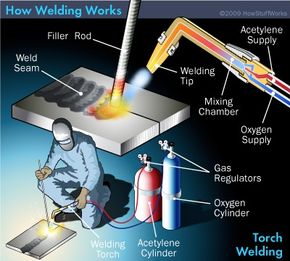The Importance of Welding WPS: Making Sure High Quality and Security in Your Jobs
The Importance of Welding WPS: Making Sure High Quality and Security in Your Jobs
Blog Article
The Ultimate Overview to Welding WPS Procedures: A Thorough Introduction for Welders
In the elaborate globe of welding, Welding Treatment Requirements (WPS) offer as the backbone of guaranteeing quality, consistency, and safety in welding operations (welding WPS). As we delve into the various components of a WPS and explore the details of certification and qualification, we will reveal the vital role these procedures play in the world of welding.
Significance of WPS Procedures
Understanding the significance of Welding Procedure Requirements (WPS) treatments is crucial for guaranteeing the high quality and stability of welded structures. WPS treatments function as a roadmap for welders, detailing the needed steps, specifications, and products needed to accomplish an audio weld. By adhering to WPS standards, welders can make sure uniformity in their work, causing dependable and structurally sound welds.
One of the primary reasons that WPS treatments are crucial is their duty in keeping weld quality and stability. Adhering to the defined welding criteria and strategies detailed in the WPS aids prevent problems such as porosity, breaking, or insufficient blend, which can compromise the toughness and durability of the weld. Furthermore, WPS treatments are vital for making certain conformity with industry criteria and codes. By following recognized WPS standards, welders can demonstrate that their job fulfills the needed demands for safety and quality, giving assurance to customers, inspectors, and regulatory bodies. In essence, the value of WPS procedures can not be overstated, as they are essential to attaining constant, premium welds that meet market criteria and requirements.

Elements of a WPS
A Welding Procedure Spec (WPS) normally makes up crucial parts that detail the details requirements for performing a weld, ensuring uniformity and quality in the welding procedure. The crucial components of a WPS consist of necessary variables such as base steels, filler steels, preheat and interpass temperature levels, welding procedures, shielding gases, welding placements, and post-weld heat therapy demands.
Base steels refer to the products being joined, while filler metals are used to load the void between the base steels throughout welding. Preheat and interpass temperatures are essential for regulating the warmth input and protecting against problems like cracking or distortion. The welding process outlines the details technique to be utilized, whether it's gas steel arc welding (GMAW), protected steel arc welding (SMAW), or another technique. Securing gases safeguard the weld pool from atmospheric contamination. Welding settings define the positionings in which welding can be performed. Post-weld heat therapy might be needed to soothe stress and anxieties and enhance the weld's homes. A detailed understanding of these components is vital for developing a effective and comprehensive WPS.

Qualification and Certification
Having actually established the vital parts of a Welding Treatment Specification (WPS), the emphasis now shifts in the direction of the essential aspects of certification and accreditation in welding methods.

Certification, on the other hand, is the official acknowledgment of a welder's certifications by an appropriate qualification body or company. Welding accreditations are generally based upon the certain welding procedures, products, and settings a welder is certified to function with. Holding a valid welding accreditation demonstrates that a welder fulfills industry criteria and is proficient to do welding jobs to the needed specifications.
Producing a WPS
To develop a Welding Procedure Spec (WPS) that satisfies sector standards, mindful consideration of welding procedures, products, and operational criteria is crucial. The very first step in developing a WPS is to determine the welding process to be made use of, such as gas steel arc welding (GMAW) or protected steel arc welding (SMAW)

Applying and Monitoring WPS
Upon settling the comprehensive Welding Treatment Spec (WPS) that carefully information welding procedures, products, functional specifications, and quality control measures, the focus changes to effectively implementing and monitoring the established procedures. Application involves making sure that all welders associated with the job know with the WPS and follow it carefully during the welding procedure. This needs offering appropriate training and guidance to assure adherence to the specified treatments. Keeping track of the WPS entails continual oversight to verify that welding activities align with the recorded specifications. Assessments, screening, and quality assurance measures are essential components of the surveillance procedure to identify any type of inconsistencies or concerns quickly. Regular audits and evaluations of the welding procedures assist in maintaining uniformity and top quality throughout the task. Reliable application and surveillance of the WPS are essential for ensuring the honesty, toughness, and safety and security of the bonded joints, eventually adding to the general success of the welding project.
Conclusion
Finally, understanding and complying with Welding Treatment Specs (WPS) is vital for welders to guarantee high quality, uniformity, and security in their work. By recognizing the elements of a WPS, acquiring appropriate qualifications and web link qualifications, producing in-depth treatments, and carrying out and monitoring them efficiently, welders can boost their abilities and effectiveness in welding methods. Following WPS treatments is important for creating high-grade welds and meeting market requirements.
In the intricate world of welding, Welding Procedure Specs (WPS) offer as the foundation of making sure quality, consistency, and safety and security in welding operations. The welding procedure outlines the specific method to be utilized, whether it's gas metal arc welding (GMAW), shielded steel arc welding (SMAW), or an additional method.To develop a Welding Treatment Requirements (WPS) that fulfills market requirements, cautious factor to consider of welding processes, materials, and operational specifications is important. The first action in developing a WPS is to recognize the welding process to be made use of, such as gas steel arc welding (GMAW) or shielded metal arc welding (SMAW)Upon finalizing the thorough Welding Procedure Requirements (WPS) that carefully information welding processes, materials, operational specifications, and top quality guarantee actions, the focus shifts to properly carrying out and checking the recognized procedures.
Report this page